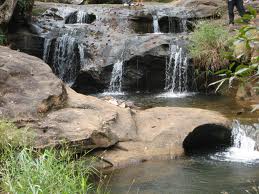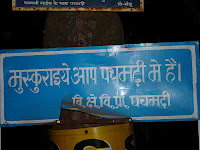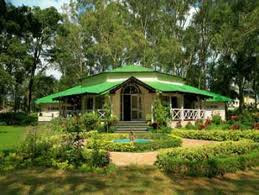Something intriguing and fascinating is in the air. The mere memory of a place is regenerating and revitalizing lost and even non-existent connections. A certain band of people, well into their40s and 50s, who once knew each other as children in a never-never land called Pachmarhi, are reaching out across continents, countries through charged cables with words of affection and excitement at the prospect of meeting after what seems like a lifetime. Is the connection sprouting afresh from the charm and magic of the place? Is it the memory of a secure and carefree childhood lived out in the verdant security of this captivating hill station in Madhya Pradesh? Could it be that they derive their affinity from a life lived together in an isolated bubble, cut off from civilization by the ghats originating out of Pipariya? Was it the ordered, friendly and intimate cantonment that left such an indelible mark on these young minds that they are able to take off from where they left off merely at the mention of this one name: Pachmarhi?
Pachmarhi O Pachmarhi, tu hai badi jaaadu bhari……
The Pachmarhi Cantonment, also known as Satpura ki Rani was historically the capital of the kingdom of a Goand tribal king called Bhawut Singh. It was Captain James Forsyth of the British Army who chanced upon the area in 1857 to quickly set up a sanatorium for the British troops in the country’s Central Provinces. With a population of approximately 10,000 today, this incredibly rich forest home of immense biodiversity was added to UNESCO’s list of Biosphere Reserves two years ago. There wasn’t much to it back then. A tiny township, a small bazaar, a single movie hall, the club and a redundant airstrip. These were all that made this saucer shaped valley a perfect frame for some fairy tale childhoods. Dotted with streams, waterfalls, caves, natural bathtubs, rock formations and priceless timber, it was not unusual to sight the occasional panther or even a tiger in this exotic everafter.
I remember clearly the cavernous Club with its thick drapes and wooden flooring during the weekly Tambola sessions. Who would ever forget the Holi ruckus in the Officers’ Mess ? There were no electronic distractions and plenty of cycling, tree climbing and running. Life was an endless picnic.The friendships I talk of evolved in and around alluring spots such as the Bee Fall, the Pandav Caves, Chauragarh, Dhupgarh, Handi Khoh, Jatashankar, Fairy Pool, Duchess Fall and Jatashankar. These were associations carved in elements: stone, forest, water and sun. The lot roamed the mountains just as Lord Shiva once did.
If you haven’t walked downhill like them on a rocky, treacherous and steep path inhaling the crisp green air, you have not known the illusion they have known and you are way short of that million dollar feeling of being completely alone and in blissful togetherness, all at the same time.
Teraa koi saani nahin, tu Pachmarhi ki sar zameen, Pachmarhiii…
The author is a Resource Center-in-charge at the Junior Wing of Air Force Bal Bharati School. A teacher with a background and training in media, she has worked in advertising, public relations, documentary film making and feature journalism. Her interest lies in the role of motivation, an all-round exposure and multiculturalism in education. A regular contributor to the ‘Teacher Plus” magazine and a blogger with a keen interest in the evolving social dynamics and their influence on young people, she maintains a blog at http://confessionsofanambitiousmother.blogspot.in/









This article by Neerja Singh is as beautiful as Pachmarhi is itself. I am always mesmerized by thinking of the raw nature of Pachmarhi. Thanks to you and Neerja Singh.
Ashok Kashyap